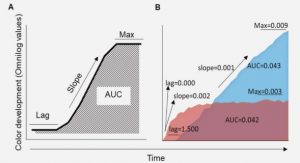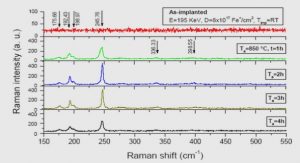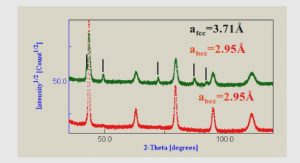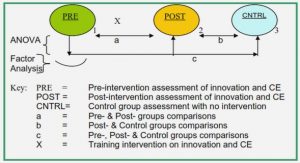Get Complete Project Material File(s) Now! »
Quality And Bias Assessment
The methodological quality scores of the included articles in this review are presented in tables in APPENDIX G. From the Randomized Control Trials, four of them were found to have high level of evidence 13/13 as they fulfilled all the requirements of a randomized control trial(Duarte et al.,2014; El-Basatiny & Abdelaziem 2015; Gatica-Rojas et al.,2017; Grecco et al., 2014). One of the articles had moderate level of evidence 11/13 (Bleyenheuft et al., 2017) as it was unclear if the children and the intervenors were blind to the treatment. Two trials scored 10/13 and were considered as low level of evidence. One (Ballington & Naidoo, 2018) because was unclear if the intervenors and the assessors were blind to the treatment and it is not sure if the study has all the requirements from a randomized control trial fulfilled. In the other (Emara 2015) it is not mentioned if the participants, the intervenors and the assessors were blinded to the intervention. The case control study (Zarkou et Al., 2018) scored 9 points out of 10 as it is not sure if the exposure period to the intervention was meaningful enough to come up to a conclusion. The case report (Song et al.,) seemed to have a high level of evidence as it was collected 8 out of 8 points.
Ethical Considerations
When we are conducting research and especially involving paediatric populations, it is important to follow the ethical guidelines in order to reduce any potential to offend or harm any human being (Bee & Boyd, 2012). The United Nations Convention on the Rights of the Child (UNCRC) articles need to be considered also (Abebe & Bessell, 2014). Any kind of research or review, in this case in the medical sector, need to have as a goal to provide new evidence regarding the topic that is about and in this way to help professionals to improve the quality of their interventions in order to have better results. Consequently, the participants will be benefited from these as they would have more effective and developed interventions (Jahn, 2011). 21 As in this review the data have medical content they need to follow the standards of the Declaration of Helsinki which the World Medical Association (WMA) has developed as a statement of ethical principles for medical research involving human beings. The regional ethical committee supervises every ongoing study to confirm and approve that all the criteria are fulfilled (World Medical Association, 2013).All of the included studies in this paper contented all the ethical requirements as there were assessed either by the local Institutional Research Review Board, or the regional Ethics Committee.
Clinical Implications
Although this review presents evidence that PT intervention enhances the PC of children with CP no specific type of exercise intervention can be suggested more than the others. This is because each case is unique and the intervention needs to be adapted and tailored to the individual needs and characteristics of the child. There are many things that can affect an intervention such as the possible medication the child takes, tolerance levels, obesity, the genetic characteristics, other movement impairments and also other intervention the child attends. While, the main goal will be enhancing the PC but it is clear that secondary goals need to be settled in order to reach this goal and also to promote the everyday functioning of the child. A more child-centered, holistic, interdisciplinary tactic in collaboration between family and the intervenors that assist them is recommended in order to have a better quality of interventions (Shonkoff & Meisels, 2000).
Limitations Of The Study
All the included studies should present the outcomes in PC only by presenting measured results. Some studies refer to PC but they do not provide measured results and they were excluded even if the intervention was beneficial for PC. The articles are limited to English language and availability in free full text and these may increase the risk of bias for important information to be missed by this limitation. Furthermore, although the search strategy appeared to target studies specifically focussed on the topic, it is possible that some significant studies were missed because the keywords were limited to title and abstract searches. A number of differences between the studies regarding the treatment settings, treatment procedures, type of CP, measurement of PC may contribute at a point that there is no consistency in the results. As cerebral palsy has different classifications the results of this review are broad and it refers in general for CP, but obviously there are different needs in order to enhance the PC for each one of the classifications. This enabled the review to be open to a wide range of conceptualisations. However it could also be argued that without a clear classification the capacity to interpret the extracted data in this review was limited.
Future Research
More longitudinal studies are required in order to reveal how PT interventions effect PC after a longer period of time. Also studies for each classification and type of CP is necessary as specific limitations will be examined and the result will be more specific and accurate. The samples are still very small so the generalisability of the results could be doubted. Larger samples are strongly recommended for future research. Furthermore, the participants should have as many common characteristics in their PC and motor impairment as possible to give better quality and similarity to the results. It would be interesting to try to combine more methods in a constant, stable programme in order to find the most appropriate PT modalities that enhancing the PC. Moreover, researches the separate the plan for dynamic and static postural control could offer a lot of information and also give the therapists an idea about how they could approach this in order to have positive effects in both at the same time.
Table of Contents :
- 1.1 List of abbreviations and key terms
- 2. Introduction
- 2.1 Cerebral Palsy
- 2.2 Postural Control in Children with Cerebral Palsy
- 2.3 Physical Therapy As an Intervention Method For The Management of PC In Children With CP
- 3. Aim of the systematic review And Research Question
- 4. Method
- 4.1 Systematic literature review
- 4.2 Search procedure
- 4.3 Inclusion/Exclusion criteria
- 4.4 Screening procedure – title and abstract level
- 4.5 Selection process – full text
- 4.6 Data extraction
- 4.7 Quality assessment
- 4.8 Data analysis
- 5. Results
- 5.1 Participants characteristics
- 5.2 Quality and bias assessment
- 5.3 Physical therapy methods and outcome measures
- 5.4 Ethical Considerations
- 6. Discussion
- 6.1. Clinical Implications
- 6.2 Limitations Of The Study
- 6.3 Future Research
- 7. Conclusion
- 8. References
- 9. APPENDIX
GET THE COMPLETE PROJECT
Effective Physical Therapy Methods For Improving Postural Control In Children Diagnosed With Cerebral Palsy: A Systematic Review.






